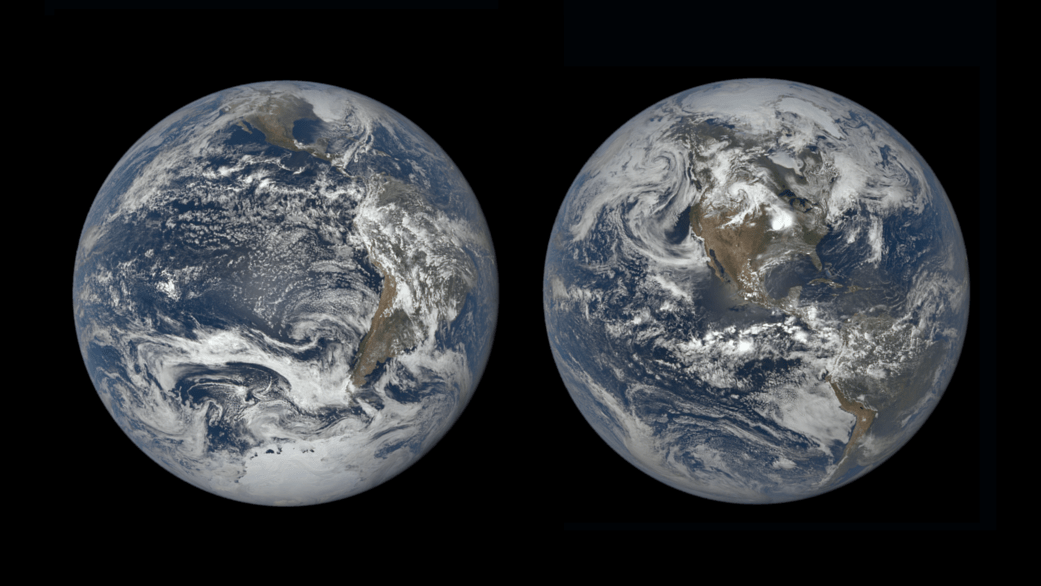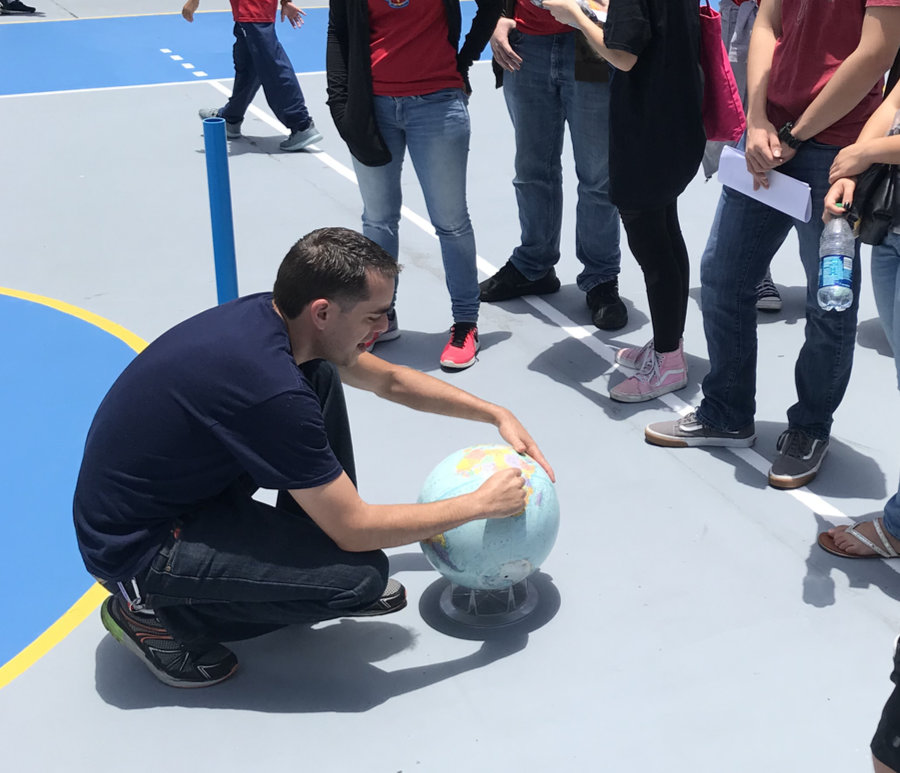
Tropical Solstice Shadows

NASA/DSCOVR EPIC
Solstices mark the changing of seasons, occur twice a year, and feature the year’s shortest and longest daylight hours – depending on your hemisphere. These extremes in the length of day and night make solstice days more noticeable to many observers than the subtle equality of day and night experienced during equinoxes. Solstices were some of our earliest astronomical observations, celebrated throughout history via many summer and winter celebrations.
Solstices occur twice yearly, and in 2024 they arrive on June 20 at 4:50 PM EDT (20:50 UTC), and December 21 at 4:19 AM EST (9:18 UTC). The June solstice marks the moment when the Sun is at its northernmost position in relation to Earth’s equator, and the December solstice marks its southernmost position. The summer solstice occurs on the day when the Sun reaches its highest point at solar noon for regions outside of the tropics, and those observers experience the longest amount of daylight for the year. Conversely, during the winter solstice, the Sun is at its lowest point at solar noon for the year and observers outside of the tropics experience the least amount of daylight- and the longest night – of the year.
The June solstice marks the beginning of summer for folks in the Northern Hemisphere and winter for Southern Hemisphere folks, and in December the opposite is true, as a result of the tilt of Earth’s axis of rotation. For example, this means that the Northern Hemisphere receives more direct light from the Sun than the Southern Hemisphere during the June solstice. Earth’s tilt is enough that northern polar regions experience 24-hour sunlight during the June solstice, while southern polar regions experience 24-hour night, deep in Earth’s shadow. That same tilt means that the Earth’s polar regions also experience a reversal of light and shadow half a year later in December, with 24 hours of night in the north and 24 hours of daylight in the south. Depending on how close you are to the poles, these extreme lighting conditions can last for many months, their duration deepening the closer you are to the poles.

While solstice days are very noticeable to observers in mid to high latitudes, that’s not the case for observers in the tropics – areas of Earth found between the Tropic of Cancer and the Tropic of Capricorn. Instead, individuals experience two “zero shadow” days per year. These days, with the sun directly overhead at solar noon, objects cast a minimal shadow compared to the rest of the year. If you want to see your own shadow at that moment, you have to jump! The exact date for zero shadow days depends on latitude; observers on the Tropic of Cancer (23.5° north of the equator) experience a zero-shadow day on the June solstice, and observers on the Tropic of Capricorn (23.5° south of the equator) get their zero-shadow day on December’s solstice. Observers on the equator experience two zero shadow days, being exactly in between these two lines of latitude; equatorial zero shadow days fall on the March and September equinoxes.
There is some serious science that can be done by carefully observing solstice shadows. In approximately 200 BC, Eratosthenes is said to have observed sunlight shining straight down the shaft of a well during high noon on the solstice, near the modern-day Egyptian city of Aswan. Inspired, he compared measurements of solstice shadows between that location and measurements taken north, in the city of Alexandria. By calculating the difference in the lengths of these shadows, along with the distance between the two cities, Eratosthenes calculated a rough early estimate for the circumference of Earth – and also provided further evidence that the Earth is a sphere!
Are you having difficulty visualizing solstice lighting and geometry? You can build a Suntrack model that helps demonstrate the path the Sun takes through the sky during the seasons. You can find more fun activities and resources like this model on NASA’s Wavelength and Energy activity.
Originally posted by Dave Prosper: June 2022
Last Updated by Kat Troche: April 2024
Simplified Summary
The June solstice happens when the Sun is farthest north from the equator, and the December solstice is when it’s farthest south. During the June one, places outside the tropics have the longest day of the year, and during December’s, they have the shortest. In the Northern Hemisphere, June marks the start of summer, while in the Southern Hemisphere, it’s winter, and it’s the opposite in December. This happens because of the axis on which Earth leans. Because of this tilt, places near the North Pole have continuous daylight in June, while places near the South Pole have continuous darkness. In December, it’s the other way around. This goes on for months, depending on how close you are to the poles. People in the tropics, between the Tropic of Cancer and the Tropic of Capricorn, don’t see as big of a change in daylight. Instead, they have two days a year where shadows almost disappear because the Sun is directly overhead at noon. If you want to see your shadow, you have to jump! The exact days depend on where you are. Around 200 BC, Eratosthenes noticed the Sun was directly overhead on the solstice in one place, comparing that to another place where it wasn’t overhead, and was able to calculate Earth’s size and shape.








